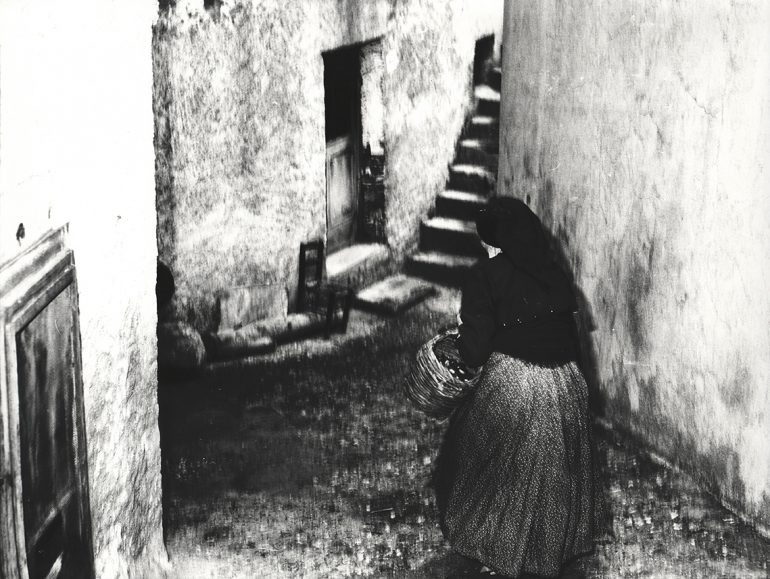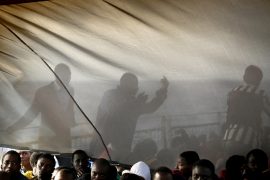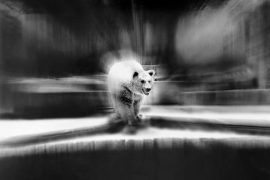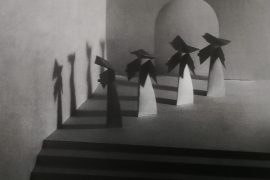by Claudia Stritof
_
Each of us has a past to look back at and a memory to draw from to revive our inner self. Photographer Mario Giacomelli was convinced of this, when he said: «everything takes me back to childhood, mine was short, but I realize that it still manages to feed me».
As I wrote in my essay on the catalogue of the exhibition Mario Giacomelli e il suo tempo, published by Silvana Editoriale, the lived and imagined childhood are two important components of his culture, in the broadest sense of the term: as knowledge and customs acquired by men as part of a society. Giacomelli draws nourishment from the earth, from the landscape, from the ancestors and traditions that surround him but, only by reworking these awareness, «the idea becomes thought».
Giacomelli did not like to leave his Senigallia; he did it sporadically but, whenever it happened, on his return from his travels he brought back photographic series of great conceptual depth. In the photographer’s archive documents (kept by his granddaughter Katiuscia Biondi, to whom, and to Mario’s son Simone, I’m grateful), a crumpled page tells the detailed itinerary that Giacomelli makes for his journey through Calabria: from the departure, on Monday 15 October 1984, until the day of the return, on Sunday 21 October.
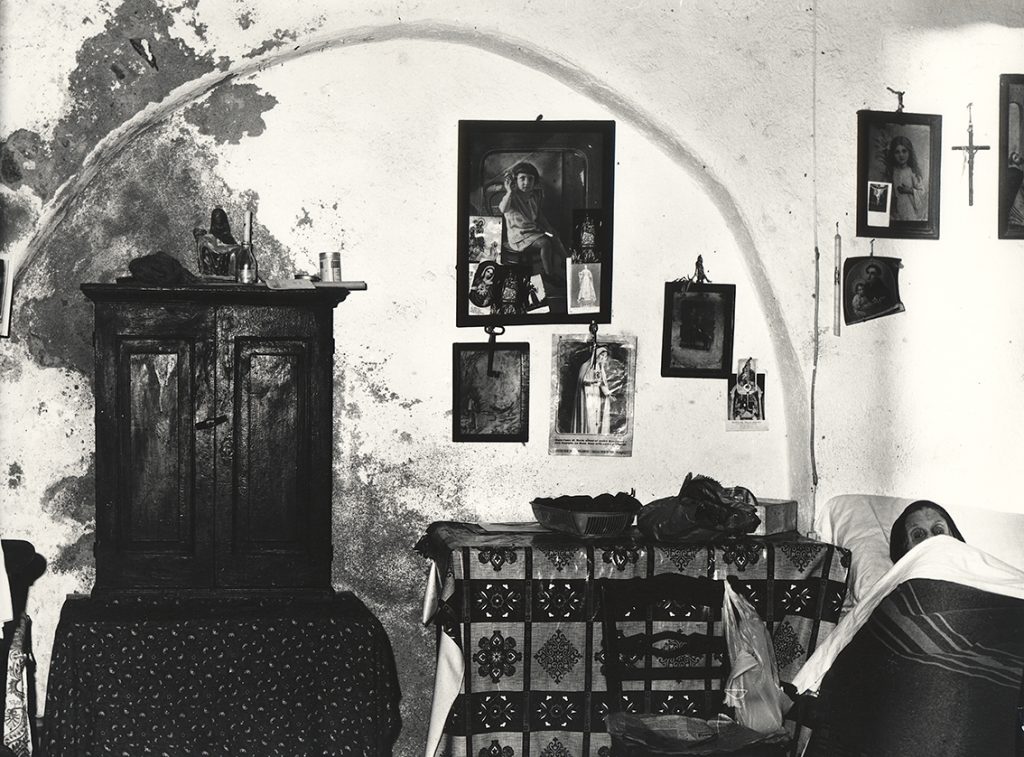
The Calabria captured by Giacomelli is not that of women in traditional dress with “bùmbula china” (the jug of water balanced on their head) of the images of “Vie D’Italia”, nor the desperate one of the terrible earthquake of ’47 photographed by Federico Patellani, but it is another: the intimate one of the “good people”, of daily life and of the chores to be done day after day with humility and devotion.
There is a portrait of the two “wives”, there are the narrow streets of the villages and the men sitting in the square chatting. It doesn’t look like the 80’s, so much so, that we can spot signs of modernity only in the details, like the white electric wire nailed to the brittle wall of a country house, and it is these minute signs that guide us in reading Giacomelli’s photographs.
As the expert Daniel Arasse says, it is through the details that the meaning of the work is strengthened: and here the shivering woman, lying on the bed, seems to warm up with a woolen blanket similar to those of the army. We can’t be sure, but the humidity of the room tells us about her humble condition, which almost clashes with the plastic sheet covering the table, and it’s the votive images behind her that tell us about her deep devotion.

Giacomelli visits Tiriolo, Cutro, Pentedattilo and many inland villages but – despite this – the photographer does not seem to understand the stories previously heard about Calabria, at least until he comes across the poem Il canto dei nuovi emigranti by Franco Costabile. Through the poet’s words, he rediscovers «those feelings of abandonment, of defeat, of disintegration that had most affected him».
Motivated by Costabile’s verses, in 1985 Giacomelli embarked on a new journey and as the photographer says: in Pentedattilo «everything seemed abandoned. Then I got to the top of this road, looking down from this belvedere and saw that they had planted lettuce».
The same happens when the photographer visits the cemetery where «I found every stone […] clean. Then I touched the flowers […], and they were fresh». Perhaps more than any other place, the cemetery is where Giacomelli sees the contradiction, in fact – as the anthropologist Francesco Faeta has pointed out several times in his careful studies on Calabrian funeral rites – it is impossible for the population to live in a place far away from where their dead rest.
And in fact, as Giacomelli notes, «someone was certainly just one step away from me. It looked like an abandoned place, secluded from the world, and, unexpectedly, I found life».
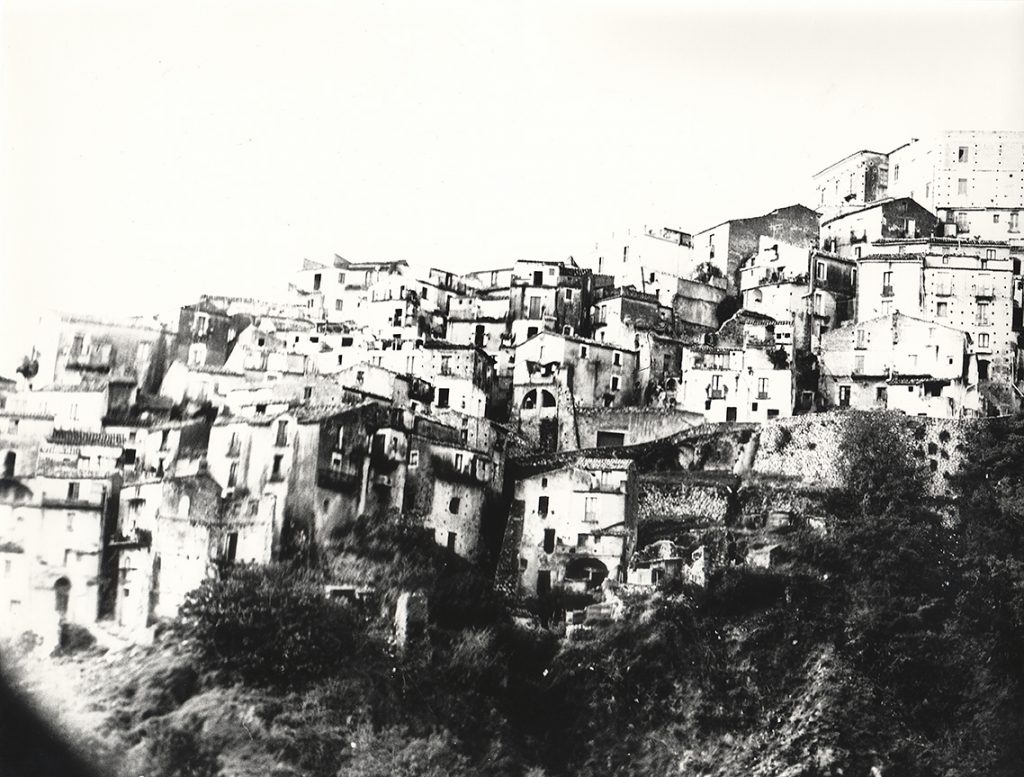
What Giacomelli sees in Calabria is the contrast, the same contrast that animates his dazzling whites and his tarry blacks: that of a country that is crumbling away, but where there is still life; of abandoned villages, but where existence continues; of humble people, who own next to nothing, but with a generous heart.
Mario Giacomelli in Il canto dei nuovi emigranti completes his personal symphony of abandonment “among the lost people”, seeing the absence in the melancholic concreteness of life and affirming the dignified presence of men and women in a precarious balance between memory and forgetfulness.
All images: Courtesy Archivio Mario Giacomelli © Rita Giacomelli
The exhibition Sguardi di Novecento. Mario Giacomelli e il suo tempo has been extended until 27 September 2020 at Palazzo del Duca di Senigallia. The exhibition hosts the masterpieces of author from le Marche together with equally famous shots of his great contemporary masters; while at Palazzetto Baviera Associazione Misa, per una fotografia artistica. Opere dal 1954 al 1958, offers a selection of photographic works by members of the Misa Group, from the civic collection Città di Senigallia.
May 27, 2020
